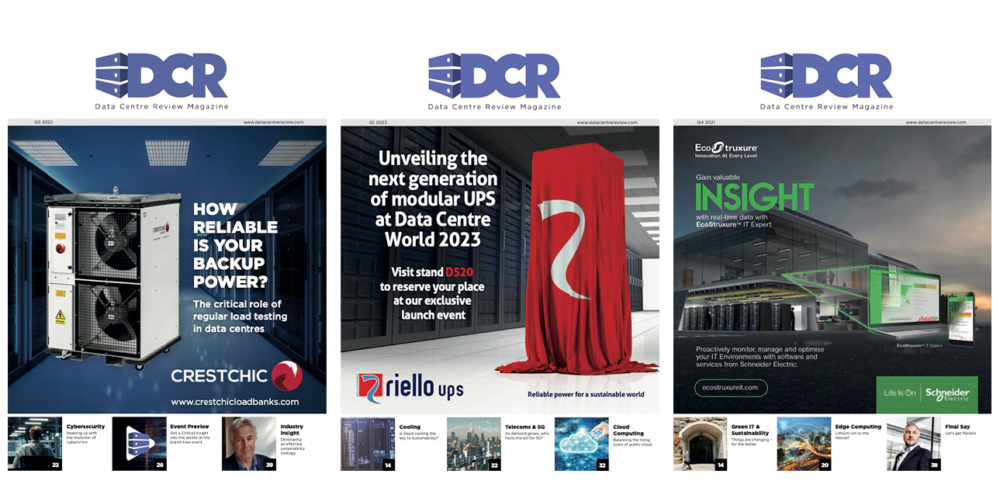Under the CP30AP reforms, Jamie Goldberg, Senior Associate at Farrer & Co, argues that grid connections have shifted from a simple administrative hurdle to a strategic, capital-intensive contest that will sort serious data centre schemes from speculative ones
Data centres, those vast, humming sheds full of servers and cables, are having their moment in the world of property development and investment. Before examining the recent reforms affecting this area, it is helpful to outline some key foundational concepts.
Infrastructure and safety considerations
A data centre is only as strong as its digital backbone, and fibre optic connectivity is non-negotiable. Without fast, reliable, and active (‘lit’) fibre infrastructure, the site is essentially unusable. Land must be located near existing fibre networks and offer room for future expansion to meet growing demand. Equally critical is safety: proximity to environmental hazards like chemical plants or flood zones can pose serious operational risks and drive up insurance costs. A secure, hazard-free location is essential for long-term viability.
Power: The dealbreaker
Data centres are energy-intensive. A typical facility may require upwards of 90 MVA, which is more than triple the supply to Gatwick Airport. If your land doesn’t already have a grid connection agreement, you’ll need to acquire one – likely through a secondary market transaction, as National Grid has paused new applications under the CP30AP reforms (discussed in more detail below).
Logistics and market realities
Data centres require robust logistics: wide access roads, flat terrain, and ample space for heavy equipment and future growth. Without these, construction delays and unexpected costs are inevitable. On the tenant side, the market is dominated by tech giants such as Amazon, Microsoft, and Google, whose requirements are exacting, and who will generally get their own way.
From energy efficiency and sustainability to advanced cooling systems and security, their expectations are high, and lease negotiations can be complex. Landowners must be prepared to meet these demands to attract and retain top-tier tenants.
Landlord obligations: Not your typical lease
Unlike standard institutional leases (where it is the tenant which shoulders most of the material obligations, such as the upkeep of the premises and the insurance costs), data centre agreements often involve significant landlord obligations. These may include the provision of power infrastructure, installation of cooling systems, ongoing maintenance and upgrades, and even compliance with security and sustainability standards.
While tenants typically pay for their own consumption, the landlord may be responsible for enabling that consumption in the first place. This shifts the financial model from passive income to active investment.
Reforms
Getting a grid connection is not just a matter of filling out a form and waiting patiently. The CP30AP reforms, the Government’s latest attempt to bring its energy infrastructure into the 21st century, have introduced a gate-based system that prioritises projects which are ‘ready’ and strategically aligned. In practice, this means that even existing connection offer holders must requalify to retain their place in the queue through a new bureaucratic obstacle course known as the ‘Gate 2 Full Offer’ process.
Only those projects that are genuinely viable and that meet the readiness and strategic alignment criteria (i.e. those with planning permission, land rights, and a credible delivery timeline) will be allowed to keep their place in the queue – this is about distinguishing serious projects from speculative ones.
The National Energy System Operator (NESO) is now in charge of this process, and it is currently not accepting new applications, so in essence the queue for a new grid connection is currently closed. While that might sound like the end of the road for aspiring developers, it is actually the beginning of a new kind of marketplace: one where grid connection rights are a highly sought-after commodity.
The rise of the secondary market
In practice, this secondary market involves acquiring or partnering with entities that already hold a grid connection offer. One common strategy is to purchase shares in SPV (Special Purpose Vehicle) companies that hold the connection rights, while another is to enter into joint ventures with existing offer holders. Assigning or novating connection agreements, subject to NESO and National Grid approval, can also help to gain access to the grid.
This market has become highly lucrative, with some offer holders commanding substantial premiums for their queue positions. However, it also presents significant barriers to entry. You’ll need significant financial resources and legal support to navigate share transfers and asset deals, and a high tolerance for regulatory ambiguity to stand a chance in this market.
Navigating the queue closure
For those without a current offer, options are limited but not non-existent. Engaging early with strategic partners, for example by collaborating with developers who already have offers, can provide indirect access to grid capacity.
Similarly, even if entering via the secondary market, projects must meet NESO’s readiness and strategic alignment criteria to retain or transfer a queue position – so sufficient preparation for Gate 2 readiness remains a necessity.
Finally, in some cases it is possible to consider alternative grid access routes. Smaller projects (e.g. under 1MW) may benefit from simplified processes or local distribution network connections.
Looking ahead
The CP30AP reforms have been a game-changer in this space. Grid access is no longer a matter of patience; it is a matter of strategy, capital, and expert professional advice. For those already in the queue, it is a seller’s market. For everyone else, it is time to get creative, or get comfortable waiting.
In this new era, the grid isn’t just infrastructure. It is leverage. Navigating it demands deal-making, diligence, and a very good professional team.


